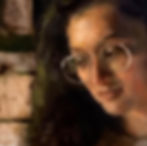How to get the right skin tones in oil painting ?
- Nilisha Phad
- Feb 26, 2021
- 2 min read
Updated: Feb 5, 2022
Rad Educators is a 1-year program intended to help beginner artists learn step-by-step techniques from professional artists across different mediums. This is in no way sponsored or promoted by any particular Art Brand.
Nilisha Phad is Rad Educator for Oil Painting - Portrait.
When it comes to painting the human figure, the ‘skin’ is the first thing that speaks about the personality of the person. The diversity in skin color of different people is a beautiful opportunity to study the colour palette. The amalgamation of all the colours in nature are reflected in the skin.
In order to make skin tones, understanding the a basic colour palette is necessary. This colour palette consists of :
• White
• Yellow (ochre)
• Red ( vermilion)
• Blue (ultramarine)
These 4 basic primary colours can be mixed in differing quantities to make a wide variety of shades .
The ‘white’ is used to lighten the shade and ‘blue’ is used to darken/ tone down the shade. Some shades can be too bright and unnatural for the skin tone . In this case , the blue can be used to tone down the contrast of the colour resulting in a more natural , pastel shade .
I have demonstrated the variety of shades one can obtain through the video .
In addition to this, one must always remember the following when painting the skin :
• Try to paint the reflected base colour in the skin before applying further skin tone. For example, base tone for a person with lighter skin would be hues of ‘green’. Base tone for a person with darker skin would be hues of ‘purple’.
• The more one practices , the more the eye is trained to sense colours that are subtle to the naked eye. Only practice can bring out those colours which add depth to the painting.
• Realize the basic colour zones on the face - the ‘reds’ on the cheeks, lips, nose and ear lobes .
- the ‘greens’ near the jaw, upper lip eye
and the eye sockets .

Connect with her - Instagram